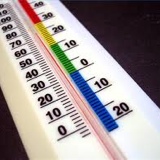Vulcaniser Pre-Start Checklist
-
Conducted on(B
-
Prepared by
-
Location
-
Permit Number
-
Photo of vulcaniser
Vulcaniser Pre-Start Checklist
-
Conveyor Belt Maintenance - Vulcaniser Pre-Start Checklist (Mines)
-
Purpose: To ensure that vulcaniser has been inspected and is in a safe working state
-
Vulcaniser ID
-
Conveyor ID
-
1. Check electrical plugs / connectors for damage
-
2. Check for any structural defects and deformations
-
3. Check for defects on water pressure and cooling connections / ports
-
4. Check for damages on pressure bolts and ensure nuts are operating normally
-
5. Check guards / covers are in place, secure and used
-
6. Check and ensure all bolts / safety pins / screws for holding down vulcaniser components are secured & intact
-
7. Visually check integrity of lifting rings and restraint components
-
8. Check and inspect the lifting chains for current rigging tagging and condition
-
9. Check platens for structural damages and distortions
-
10. Check electrical leads for defects and electrical compliance tags
-
11. Check for any visible defects and damages on the water pressure pump or compressor
-
12. Check the condition of air bag if the vulcaniser is a beam press
-
12. Check the condition of the pressure hoses and pressure gauges and see if all in a good condition
-
13. Check the condition of all the cooling hoses and fittings
-
14. Check the structural integrity and deformations on the C-Clamps
-
15. Out of service defective equipment and raise notifications for repairs
-
Job supervisor to sign off the hold point verifying that all controls are in place
-
Supervisor Signature
-
Comments
-
Document 0168328
-
Version No: 3.0
-
Page 1 of 1
-
This document is uncontrolled when printed or downloaded. You are responsible for ensuring that you use the most recent version of this document.














